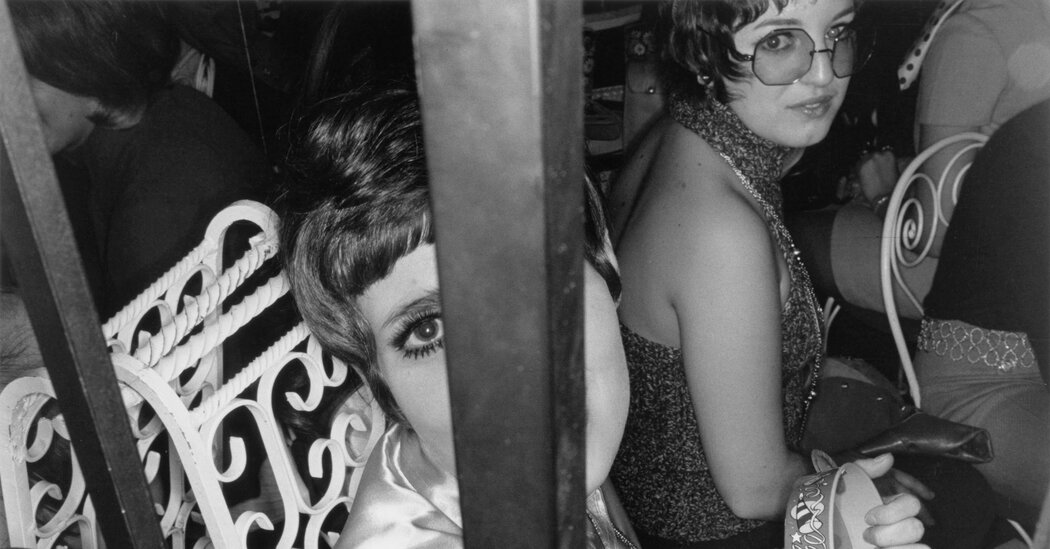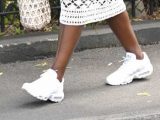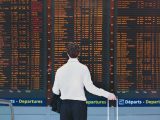
Filmmaker Joel Coen Puts His Spin on the Photos of Lee Friedlander
05/01/2023It was a happy fallout of Covid.
During the pandemic shutdown, the filmmaker Joel Coen and his wife, the actress Frances McDormand, hunkered down in their home on the Marin County coast of California. The photography dealer Jeffrey Fraenkel and his husband, Alan Marks, a real-estate consultant, relocated from San Francisco to their weekend house in a neighboring town. The two couples, who knew each other casually, began spending more time together.
One evening, Fraenkel asked if Coen and McDormand were familiar with the work of Lee Friedlander. At 88, Friedlander is one of the greatest living photographers, whose pictures Fraenkel has been exhibiting for more than 40 years.
“I thought Lee was ripe for an outside approach and inviting a filmmaker seemed like the way to go,” Fraenkel said of his matchmaking inspiration. “Anyone who’s seen Joel’s movies knows he has a special eye for images.”
Although the subjects of Friedlander’s black-and-white photographs since the early ’60s have been wide-ranging — public monuments, motel rooms, party scenes, portraits, self-portraits, nudes and landscapes — what unites them is his unerring sense of composition. In his ability to create harmonious wholes out of urban fragments, he is the contemporary heir to Eugène Atget, who memorialized Paris in the early 20th century. Like Atget, too, Friedlander finds unexpected juxtapositions in the reflections in plate-glass windows.
The witty and carefully crafted movies that Coen has written and directed — most with his brother, Ethan, including “Barton Fink,” “Fargo” and “No Country for Old Men”— display a similar flair for revealing the mystery in what might seem at first glance to be ordinary and banal.
Fraenkel’s question about Friedlander landed on fertile ground. “I certainly knew of him, and I think Fran did a little,” Coen said recently, in a joint video interview with McDormand from California. “Jeffrey floated the idea of doing a show of Lee’s photographs. He said it could be whatever you want. ‘Just 10 photographs if you like.’ ”
Coen and McDormand visited the Friedlanders in New City, N.Y., to make sure they were simpatico. The meeting was a great success. “They came here with Jeffrey,” Friedlander recalled. “We were ready for them with food, but they brought food, too. We had a sort of picnic indoors. When Joel and I met, we both thought we might have known each other. We didn’t, but we were so familiar with each other.”
Over the last year, Coen expanded the project into a sequenced book of 70 Friedlander photos, “Framed,” that is the basis for two exhibitions, at the Fraenkel Gallery in San Francisco, from May 6 through June 24, and at Luhring Augustine in New York, from May 13 to June 24. Each show will display about 45 photos.
Coen began by leafing through books of Friedlander pictures and decided to arrange the new book to draw attention to Friedlander’s compositional approaches. “Looking through these books and going back and forth, it was a pattern recognition for me — patterns which I know are instinctive but are manifold in everything he does,” he said.
He began with the artist’s simplest formal structures and advanced into greater complexity. “The first thing I noticed was the splitting,” Coen explained. Friedlander repeatedly organizes a picture with a vertical post dividing the frame. “The post, the post,” Coen continued. “Then I see the posts are slightly diagonal, and the affinity between the diagonal post and how car interiors are designed. Then I see how he uses diagonal shadows like the posts. Now I see how he is using television screens like windows. Now I see how he is using light to define the same areas.” As the book unfolds, the themes and variations become evident.
“Because he’s a filmmaker, he would show me the sequences on an iPad,” McDormand recalled of the way her husband storyboarded the book.
In addition to the book, Coen created for the two gallery shows what he calls a “flip book” — a three-and-a-half-minute video of images arranged in an order that highlights these strategies.
To learn what the artist thinks of Coen’s curatorial approach, I traveled to suburban Rockland County on the west side of the Hudson to pay a call on Friedlander and his wife, Maria Friedlander, driving down a wooded road, past an apple orchard, to the rambling 1947 house faced with brown shingle and stone from a local quarry that they have inhabited for over half a century.
Friedlander said he found Coen’s observations intriguing. “I tend to put posts in,” he remarked. “He says all kinds of nice things that I don’t recognize. Splitting, splintering. Evidently my pictures are that way, but I didn’t think, ‘I want to take a splintering picture.’ If you’ve done the same thing for 60 years, you don’t think of motive very much. I just walk and see something interesting.”
Friedlander works with film. Unlike a digital photographer, an artist who shoots film doesn’t see the images until the film is processed and printed on contact sheets. Photography thrives on accidents; there can be surprises. “In one photograph, the reflection looks like part of the building,” Friedlander said of “Albany, New York, 1967,” a picture that Coen chose for the book. “I didn’t notice until I printed it.”
Friedlander is the most cerebral of photographers, making intricate images marked by divisions, reflections and repetitions; and yet, discussing his work, he insists that none of this is on his mind when he takes the picture. “It’s just a great game,” he said. “As complicated as a picture could get, it’s done in 1/100th of a second — or less.”
When asked about this paradox, Coen said, “I’m extremely sympathetic to Lee’s point of view in how he thinks about his own work. It comes up with any writer, photographer or filmmaker, because you’re always asked to analyze your own process or the obsessions of your own work. I’ve always been very much of the opinion that the obligation of the person who makes the work is to make the work, and the obligation of the people who view the work is to think about it.”
“You’re not living retrospectively,” McDormand interjected. “You’re living alive in the moment, creating something.”
“But when I look at someone else’s work, I take on the mantle of the opposite side of the fence,” Coen continued. “Whether you intended it or not, I’m telling you what I see and what I’m drawn to.”
A still photographer and a filmmaker have very different aims, Coen said. “I take photos with my iPhone like everybody else, but I was looking at a visual form that I have no connection to. The primary thing in cinematography is a narrative, and everything else is secondary. Often the director of photography will set up a shot that is so beautiful but so deficient from a narrative point of view.” And the shot is scrapped.
Coen said that Friedlander’s photographs are animated with his idiosyncratic wit. “They are extremely cerebral, they are extremely formal,” he explained. “At the same time, they have a sense of humor, a very delicate one. For that reason, they’re not cold. I love the fact that they’re so complicated that way, but he doesn’t talk about them analytically.”
McDormand is drawn to the long, close marriage of the Friedlanders, who were wed in 1958. “I think Jeffrey was interested in us meeting them,” she said. She remarked that for her, this was a story about three married couples. “The six of us, we don’t have to do anything we don’t want to do,” she said. She was especially moved by Lee’s portraits of Maria, in particular “Maria, Las Vegas, 1970,” which is also in the new book.
“There is a tenderness,” she said. “One of the most resonant ones, for both of us, is his shadow across her partially nude body. For me, and then meeting them, that photograph is resonant to their whole relationship.”
Friedlander continues to photograph, and six days a week, he prints from his old negatives in a spacious darkroom he constructed in the basement of his house. “I love working,” he said. The prints he is making now are of the landscapes he photographed 20 years ago in the West — thick tangles of branches, boulders and pine needles.
“I’m still shooting the same subjects when I go out west,” he said. “The more jumble, the better I like them — if they work. I don’t want to repeat Ansel Adams. It wouldn’t be any fun to do that.”
Images like “Albany, New York, 1967,” where a woman stands by a post that divides a row of tall buildings from the mirrored reflection of other tall buildings, or “California, 1970,” with the diagonal struts of Plexiglas pay-phone enclosures interrupting and refracting the city scene, organize urban chaos miraculously. Coen said that as he perused Friedlander’s photographs, he thought at one point, “‘These are impossible compositions. How does it happen that these things that seem to be so impossible are so perfect?’ Thinking more about an artist I admire was the whole motivation.”
Source: Read Full Article

